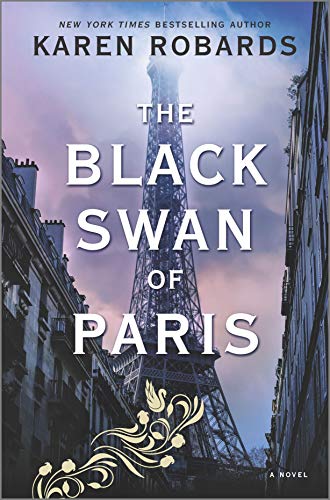The Black Swan of Paris
Robards’ gripping novel is a powerful tale set in 1944 Nazi-occupied France. Artists have leeway in this strict, brutal regime, which enables Genevieve Dumont, a dazzling chanteuse in the vein of Edith Piaf, to travel between countries and access high-level Nazis. She works under her pianist manager, Max Bonet, aka Major Max Ryan, SOE: a former RAF officer, now a British agent running an espionage unit. Their relationship is one of intense antagonism and verbal sparring. This visual novel is packed with action, suspense and peril as they walk a continual tightrope; they could be found out at any moment.
I winced at the horrific graphic torture carried out by Genevieve’s admirer, S. S. General von Wagner, the most notorious interrogator of resistance workers. Dining with him to elicit information, she cringes, “looking into the face of evil.”
As Genevieve smuggles documents, we sense her precarious situation, which turns desperate as she attempts to rescue her estranged mother, Baroness Lillian de Rocheford, from von Wagner’s fortified castle in Stuttgart before a tortured Lillian reveals details of the upcoming Allied invasion or is executed.
Drawing parallels to Kristin Hannah’s acclaimed The Nightingale, we have estranged sisters risking death as resistance heroines, both with avian code names.
Why the Black Swan? “She was in costume, in a tight strapless black bustier style bodysuit glittering with sequins… a full trailing skirt of dyed-black ostrich feathers… a headdress of three tall black ostrich plumes… the nickname Max and his team had bestowed on her.” The bird is also a metaphor for achieving artistic perfection and suffering that leads to transformation which occurs as she grows in courage. At the start Genevieve sees herself as a caged songbird but, facing danger, must succumb or soar.










